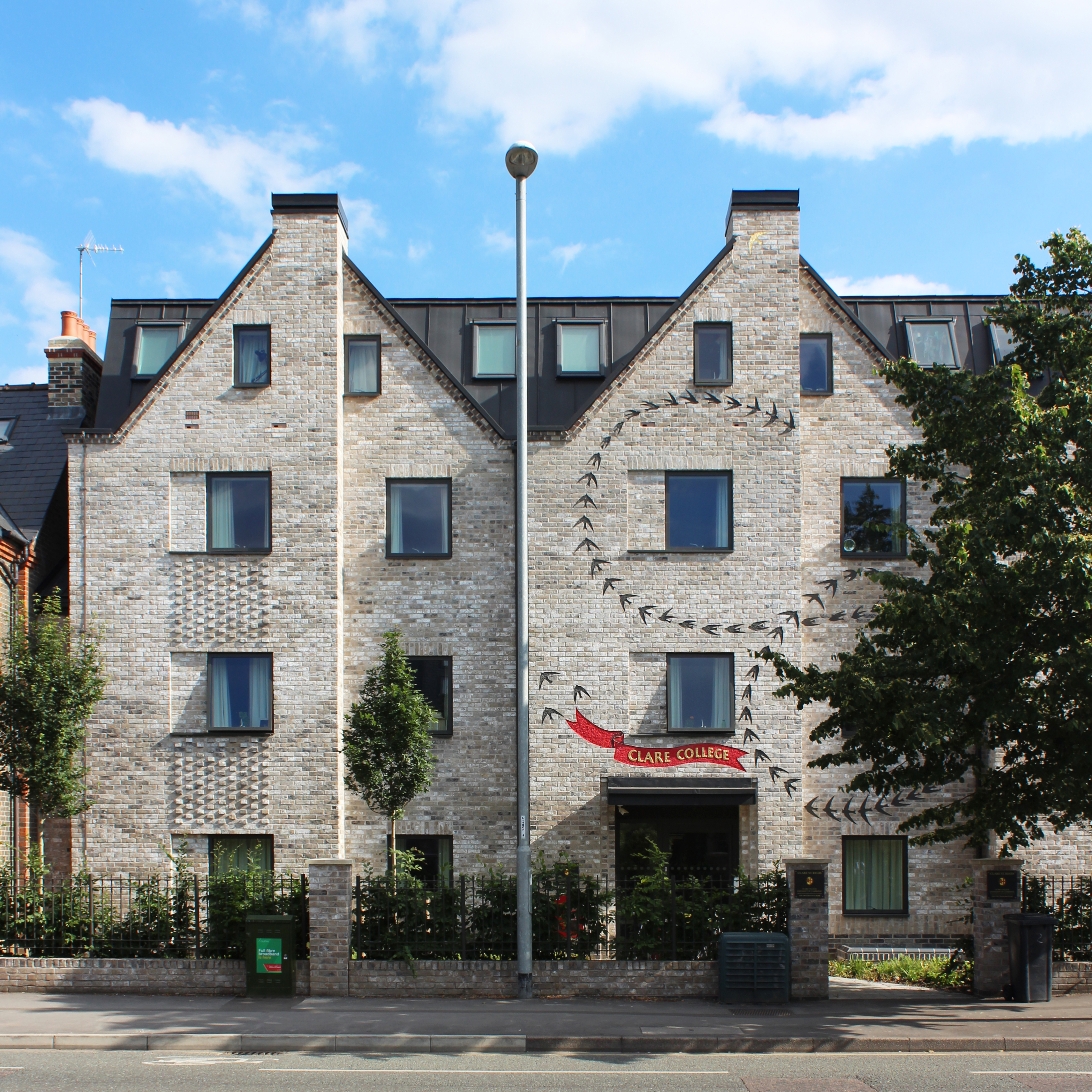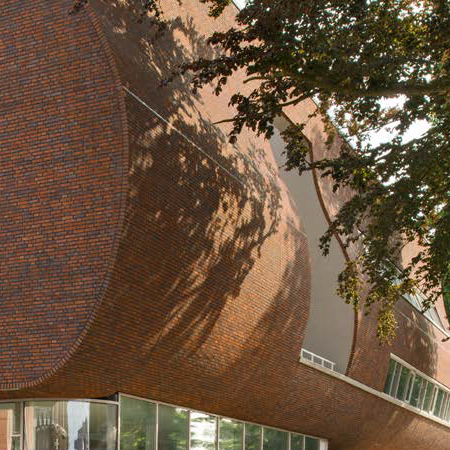Located on the edge of Cambridge’s De Freville Conservation Area, Clare College’s St Regis site has provided accommodation for postgraduate students of the University of Cambridge for over fifty years. In recent times, the need for regeneration became clear and Freeland Rees Roberts Architects was appointed to design a new scheme. The practice worked closely with Vandersanden, selecting brick as the principal element of the attractive new facades.
While the old buildings failed to fit into the surrounding urban context and lacked the facilities required, the new scheme provides more and improved student accommodation for the college together with market flats. To achieve this successfully in a residential area, it was vital to consider the massing and perceived scale of the buildings. Consequently, the volumes were broken down to feel more like a series of big houses than large residential blocks.
Clearly of a confident, contemporary design, the buildings respect their surroundings, repairing and maintaining the rhythm of the street scene. In large part, this is due to the choice of bricks and the splitting of the facades into separate gables with slopping roofs. Vandersanden’s Majestic and Luna Apollo facing bricks were selected and contribute to the detailing of the facades.
“There is plenty of life and colour variation in the bricks,” explains Alexander Hobohm, director at Freeland Rees Roberts Architects. “This assists in breaking down the overall massing of the facades and works well with the dark zinc of the roofs.”
The bricks act to soften the appearance of the facades and link the context of the new and neighbouring buildings. The yellow grey Majestic brick predominates with the darker grey Luna Apollo providing detailing. It forms the plinth that anchors the buildings while a soldier course of Majestic bricks above provides the transition to the main body of the walls. At the junction with the zinc roof, the detailing is subtle with the transition provided by stepped courses of the Luna Apollo.
Panels of projecting brick headers are a further feature, introduced to add a textural quality that brings light and shade to the facades.
“The brick’s colour, tone and texture were qualities that other manufacturers couldn’t offer,” says Hobohm. “Usefully, Vandersanden invited us to see a number of projects using the same bricks which was so much more helpful than relying just on sample panels.”
Another contributory factor to the look is the choice of mortar. This was specified to create a natural, lime mortar-like appearance and was achieved by fully pointing and, after the initial set, brushing back; there are no struck joint lines.
A defining feature of the front facade is the public art. The college commissioned a carving featuring swifts in flight, inspired by the birds that were in residence in the original buildings. Swift boxes have been integrated into the new facades to provide a home for these beautiful birds. Using hand tools and following trials, stonemasons carved some 5-10mm into the face of the brickwork to create the design. A breathable paint finish was applied to highlight the indentations - a single bird at the very top is gold-leafed.
For Hobohm, working with Vandersanden was a positive, supportive and proactive process. “It was very straightforward. Early on, Vandersanden supplied product and technical information, plus a batch of the two brick types, enabling us to create sample panels. The bricks helped deliver the project vision and the client is delighted. It’s now one of the college’s signature buildings and has already won several awards.”
To find out more about this project, and for more information on Majestic, Luna Apollo and the wide range of high-quality bricks available from Vandersanden visit their website. Details on Freeland Rees Roberts Architects can be found here.
Clare College Cambridge Regenerates Clare St Regis Accommodation with Vandersanden
| T | +44 (0) 1954 268075 |
|---|---|
| F | +44 (0) 1954 267398 |
| E | sales@vandersanden.com |
| W | Visit Vandersanden UK's website |
| Vandersanden UK Limited, 16 Stocks Bridge Way, Compass Point Business Park, St. Ives, PE27 5JL |
Products by this Company










